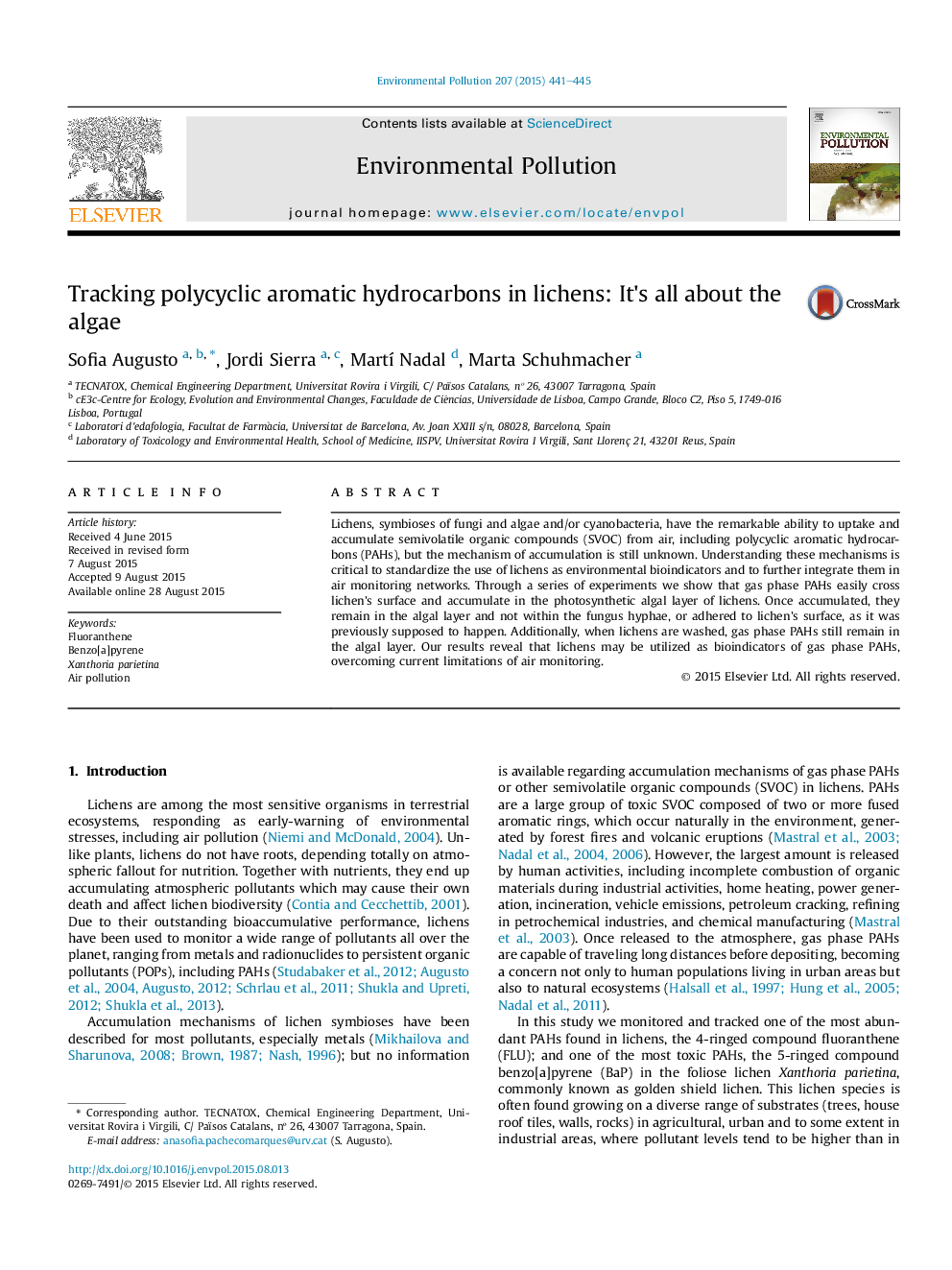| Article ID | Journal | Published Year | Pages | File Type |
|---|---|---|---|---|
| 6316232 | Environmental Pollution | 2015 | 5 Pages |
â¢Gas phase PAHs accumulate in the photosynthetic algal layer of lichens.â¢When lichens are washed by rain, gas phase PAHs remain in the algal layer.â¢Algae content may be a source of variability when interpreting PAH data in lichens.
Lichens, symbioses of fungi and algae and/or cyanobacteria, have the remarkable ability to uptake and accumulate semivolatile organic compounds (SVOC) from air, including polycyclic aromatic hydrocarbons (PAHs), but the mechanism of accumulation is still unknown. Understanding these mechanisms is critical to standardize the use of lichens as environmental bioindicators and to further integrate them in air monitoring networks. Through a series of experiments we show that gas phase PAHs easily cross lichen's surface and accumulate in the photosynthetic algal layer of lichens. Once accumulated, they remain in the algal layer and not within the fungus hyphae, or adhered to lichen's surface, as it was previously supposed to happen. Additionally, when lichens are washed, gas phase PAHs still remain in the algal layer. Our results reveal that lichens may be utilized as bioindicators of gas phase PAHs, overcoming current limitations of air monitoring.
